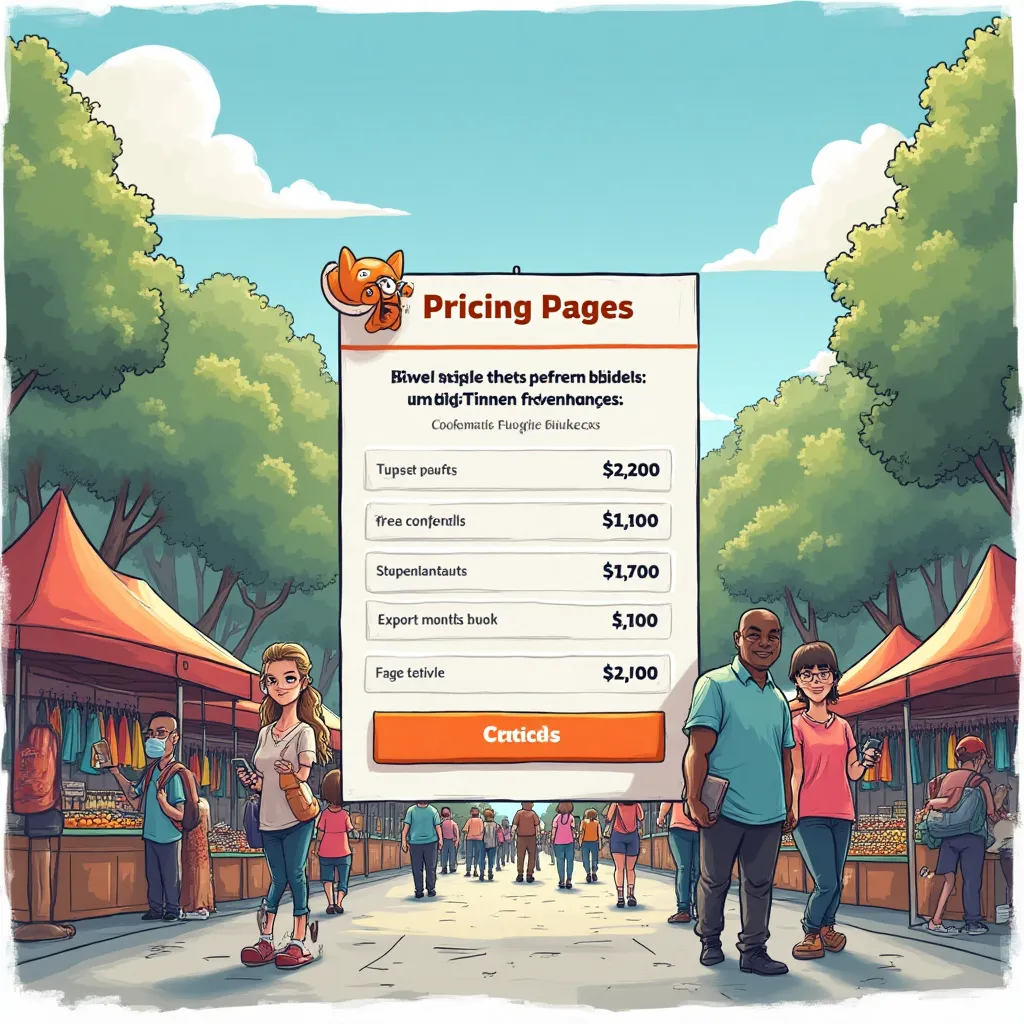The Power of Pricing Pages: Boosting Conversions and Building Trust
Imagine strolling through a bustling flea market, surrounded by vendors showcasing their wares. But, have you ever noticed that none of them display prices for their products? This lack of transparency can lead to friction in the buying process, causing customers to haggle over what they deem a “fair price.” In the online world, your website is your virtual stall, and a well-crafted pricing page is essential to reduce friction and build trust with potential customers.
Understanding the Role of a Pricing Page
When customers visit your website, they’re likely to search for your pricing page to make informed purchasing decisions. This page provides a clear overview of your prices and what customers can expect when they make a purchase. If you offer different product or service tiers, the pricing page displays the available options, helping customers choose the best fit for their needs and budget.
Key Components of an Effective Pricing Page
A well-designed pricing page is crucial to converting prospects into paying customers. Here are the essential elements to include:
- Clear Pricing Tiers: Use labels like “Free,” “Growth,” “Pro,” and “Enterprise” to distinguish between tiers and help customers quickly identify which one suits their needs and budget.
- Feature Breakdown: Provide a detailed breakdown of the features included in each tier, creating a comparison table that helps customers assess the value at each price point.
- Pricing Details: Be transparent with pricing information, including currency, billing frequency, and any potential extra fees or charges.
- Call-to-Action (CTA) Buttons: Design prominent CTA buttons that encourage users to commit to an action, such as purchasing a product or signing up for a subscription service.
- Frequently Asked Questions (FAQs): Include an FAQ section to address common questions or concerns, providing quick answers and avoiding the need for customers to contact support.
Designing for User Experience
To create an effective pricing page, consider the following design principles:
- Visual Hierarchy: Apply a visual hierarchy to attract attention to the most important elements, using font size, color, and spacing to highlight critical details.
- Comparative Layout: Optimize the layout to allow users to easily compare different pricing tiers side-by-side, highlighting the differences and making it easier for them to make a decision.
- Readable Content: Ensure that your content is clear, concise, and scannable, breaking it up into sections using headings and subheadings to enhance accessibility.
Creating Trust and Reducing Friction
Building trust with your customers is crucial to encouraging them to make a purchase. Here are some ways to remove barriers and instill confidence:
- Customer Testimonials: Showcase positive reviews or testimonials from existing customers to demonstrate your business’s credibility and value.
- Money-Back Guarantees and Refund Policies: Clearly communicate your refund policy to address concerns and provide a risk-free experience for customers.
- Transparent Terms and Conditions: Provide a link to your website’s terms and conditions, summarizing key points relevant to the pricing and purchase process.
Responsive and Mobile-Friendly Design
Ensure that your pricing page is accessible and consistent across all devices, including desktop, mobile, and tablets. A responsive design allows users to easily navigate and compare plans, complete actions, and make purchases seamlessly.
By incorporating these essential elements and design principles, you can create a pricing page that builds trust, reduces friction, and encourages customers to convert into paying customers.
